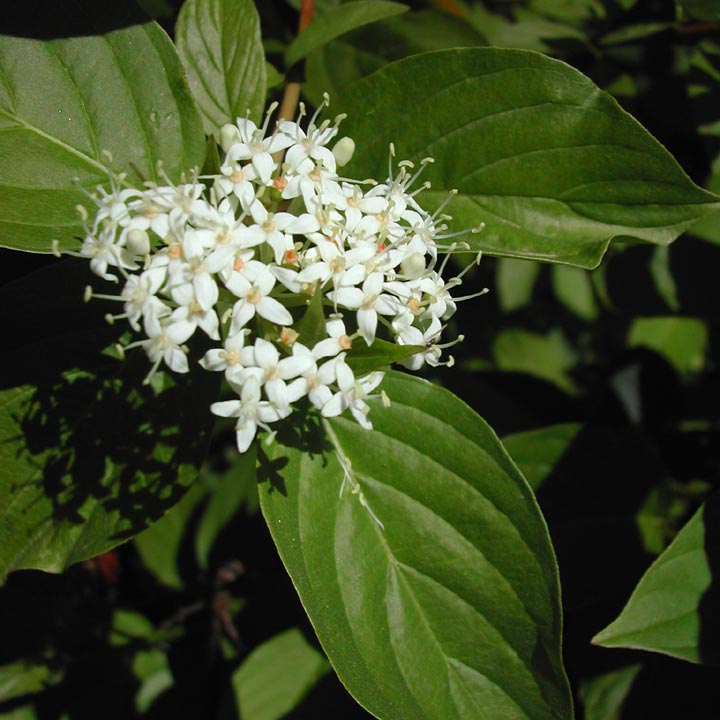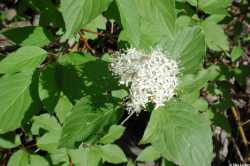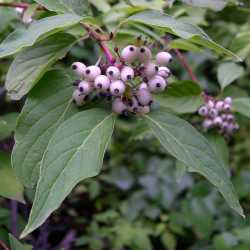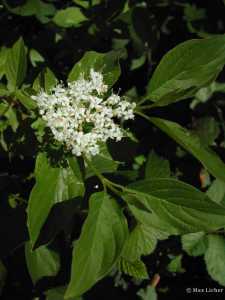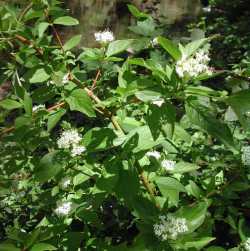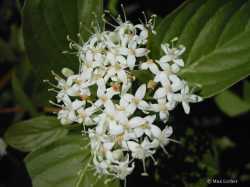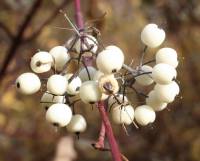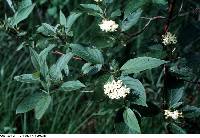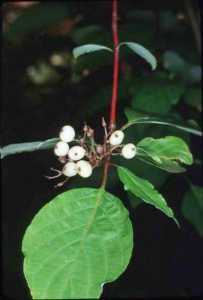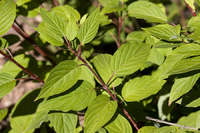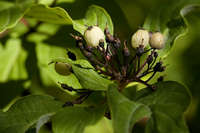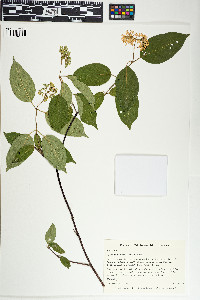|
Family: Cornaceae
redosier dogwood, more...western dogwood [Swida sericea (L.) Holub] |
Shrub 1-3 m, often forming dense thickets; twigs bright red; pith large and white; lvs lanceolate to elliptic or ovate, mostly 5-10 cm and a third to two-thirds as wide, acute to gradually acuminate at the tip, acute to broadly rounded at base, distinctly whitened beneath; lateral veins in well grown lvs 5-7 to a side; infl flat or slight convex; fr white (reputedly sometimes blue), 7-9 mm; stone brownish-black, with 7-9 vertical yellow stripes; 2n=22. Streambanks and moist woods; Nf. to Alas., s. to Pa., Ind., Ill., and n. Mex. May-Aug. Pubescence of the lower lf-surface typically sparse and strictly appressed, that of the twigs minute and mostly appressed. (C. baileyi, a form common about the Great Lakes and in s. Ont., with the pubescence partly spreading; C. interior, a chiefly western form, also found e. to Mich. and Ind., with the infl and twigs tomentose) (C. stolonifera)
Gleason, Henry A. & Cronquist, Arthur J. 1991. Manual of vascular plants of northeastern United States and adjacent Canada. lxxv + 910 pp.
©The New York Botanical Garden. All rights reserved. Used by permission. Martin and Hutchins 1980, Kearney and Peebles 1969 Common Name: redosier dogwood Duration: Perennial Nativity: Native Lifeform: Tree Wetland Status: FACW General: Clumpy deciduous shrub to 2 m tall, branches red to purplish, glabrous to minutely strigose. Leaves: Opposite, ovate with short petioles 5-8 cm long 1-5 cm wide, bright green, glabrous to sparsely pubescent above, conspicuously whitish glaucous to finely pubescent below, margins entire, with tufts of hairs in the axils of the veins. Flowers: Flat topped cyme of small white flowers, 4 minute sepals, 4 spreading petals, these white to cream and 2-3 mm long. Fruits: Two seeded drupe about 8 mm in diameter and white. Ecology: Found in moist soils along streams from 4,500-10,000 ft (1372-3048 m); flowers May-July. Notes: Based on its habit you could confuse this species with Apocynum cannabinum given its opposite leaves and reddish stems, but pay attention the leaves being much bigger, a more vibrant tone of green, and being on the whole part of a much larger plant. Ethnobotany: Taken for colds, as a cough medicine, for fevers, for diarrhea and intestinal worms, the fruit was eaten raw, dried, branches used for basketry, other building materials, as a bitter tonic, and used ceremonially. Etymology: Cornus is the Latin name for dogwood, while sericea means silky. Synonyms: None Editor: SBuckley, 2010 |

